Let me set the scene. My wife uses the new iPhone XR while our son has the Samsung Galaxy S9. She's fully aware that both are high-dollar phones jacking up our bill each month. Out of curiosity, I handed her a phone I was reviewing, the Coolpad Legacy.
She saw how the Legacy unlocks with a face or finger. She watched me navigate through Android and loaded a few apps. I then asked how much she thought the phone would cost. At least $1,000, she said.
When I revealed the Legacy's sub-$200 price, she told me I was full of crap.
Nope.
The point here is that the sub-$200 phone market isn't saturated with lackluster, bottom-of-the-barrel devices. The Coolpad Legacy is a good example of a premium-like smartphone sold at an extremely affordable price. You can get cool features like face recognition and fingerprint scanning without the associated premium cost.
Let's dig into Android Authority's Coolpad Legacy review and see why this phone is a great prepaid option.
Coolpad Legacy review: The big picture
The prepaid phone market ignited in the 1990s. It serves as an alternative to post-paid plans (contracts) and subsidized devices. Prepaid is ideal for customers with poor credit or those who simply don't want a ball-and-chain plan.
China-based ZTE was a huge player in the prepaid market and stood as the fourth-largest phone supplier in North America until 2018. The U.S. government enforced a trade ban lasting three months, preventing ZTE from obtaining American-made parts and software. During that time, competitors like Coolpad, HMD Global, and Motorola swooped in to fill the void.
Based out of Shenzhen, China, Coolpad Group Limited opened a local branch, Coolpad Americas, in Frisco, Texas, in 2012. In January of this year, former President and CEO Casey Ryan announced a new initiative to focus on products that connect the entire family. These include smartphones, basic flip phones, and connected devices for kids.

The company's latest smartphone, Legacy, targets the prepaid wireless market. Metro by T-Mobile currently sells the phone for $180, though Coolpad lists a suggested retail price of $130. However, Metro provides a $150 in-store rebate if you switch from another carrier. That drops the final device cost to $30.
The Coolpad Legacy is also now available on Boost Mobile. It has a retail price of $150 discounted down to $100.
See also: Coolpad Mega 5A launched in India: Price, Specifications, and Features
What's in the box
- Coolpad Legacy phone
- USB-C to USB-A cable
- 18W rapid charger
- Nano SIM card
- SIM card tray key

There's really nothing exciting to see here. As the list shows, the phone doesn't include headphones. Instead, you get everything needed to jump on T-Mobile's network. Just insert the included nano SIM card, open the myMetro app, and activate your prepaid service.
Design
- USB-C port
- 165.86 x 80.52 x 8.38mm
- 169.8g
- Rear-mounted fingerprint reader
- Face unlock
- MicroSD slot
- 3.5mm headphone jack
- No IP rating
The Coolpad Legacy is a big phone. Its side bezels are decently thin, but you'll see a black header and footer measuring one-quarter inch each. The bulk is essentially the chassis itself. There's no edge-to-edge screen framed by a slim chassis as seen with flagship phones.

Surrounding the display is a silver aluminum frame with rounded edges running along the left and right sides. The top and bottom sides are completely flat, creating a dull edge where the rounded sides connect. While I get it's a design thing for standing out in a crowded market, I'd rather see rounded edges along all four sides. That's just me.
I'd rather see rounded edges along all four sides. That's just me.
The dual-purpose nano SIM card / MicroSD card tray resides on the left edge, while the power and volume buttons reside on the right. At the top you'll find a microphone and a 3.5mm headphone jack. The bottom edge plays host to the USB-C port and two speaker grilles: One for the 1W speaker and one for the main microphone. The front-facing camera and earpiece speaker sit within the phone's display header as usual.

The rear panel glass features a Quicksilver color to complement the silver aluminum frame. Coolpad mounted the two cameras, the LED flash, and a fingerprint reader vertically in a straight line towards the top. Expect to see this on more Coolpad phones, as the company plans to use it as a signature design characteristic. Customers with piano fingers shouldn't have a problem accessing the reader. Those with smaller hands, however, might need to grip the phone differently due to its bulky size.
See also: Spec showdown: Moto G6, G6 Plus, G6 Play vs Moto G5 series
Display
- 3.6-inch TFT LCD
- 2,160 x 1,080 at 60Hz
- 380ppi
- 18:9 aspect ratio
The display maxes out at 470 nits. At its highest setting, the screen is extremely bright indoors. Hot colors are vibrant while cool colors are rich to the eye. Viewing angles are great too, with the color and brightness intensity dimming ever so slightly as you angle the screen. Even at 2pm with the sun beaming straight down, I could still read webpages and emails with some effort.

For testing, I used the default display resolution. Technically the screen is capable of 2,160 x 1,080 at 60Hz, but you can switch to Small and Large formats in the settings. For example, the Small setting enables a 4×4 app layout on each screen. The Default and Large settings enable 5×5 layouts, but the latter renders smaller icons for a less-cluttered appearance. These settings do not change the resolution, but instead simply resize the icons.
The Quick Settings menu provides a Night Light toggle. When active, the screen filters out blue light, presenting an amber luminescence. If you type "Display" in the Settings search field, you can find a Night Light scheduler. Here you can manually set a Night Light cutoff time or select "sunset to sunrise." There's an intensity bar too for ramping up or down the amber level.
Performance
- Octa-core Qualcomm Snapdragon 450
- Adreno 506 GPU
- 3GB RAM
- 32GB internal storage
- Bluetooth 4.2
- MicroSD card up to 128GB
Coolpad's Legacy uses an entry-level Qualcomm SoC, so we can't expect huge performance numbers. What we can do is see how the phone stacks up against devices in the same class, like Motorola's $249 Moto G6 (Snapdragon 450) and $199 Moto G6 Play (Snapdragon 427).
#gallery-1 { margin: auto; } #gallery-1 .gallery-item { float: left; margin-top: 10px; text-align: center; width: 33%; } #gallery-1 img { border: 2px solid #cfcfcf; } #gallery-1 .gallery-caption { margin-left: 0; } /* see gallery_shortcode() in wp-includes/media.php */The Coolpad Legacy performed slightly better than the G6 in three CPU benchmarks while falling slightly behind in our custom Geekbench utility. The Moto G6 Play fell behind both in all benchmarks given that it relies on an older Snapdragon chip.
On the graphics front, the Coolpad Legacy matched the Moto G6 in the GFXBench "T-Rex" benchmark. It also managed a higher framerate average in the suite's "Manhattan" test. That wasn't the case in 3DMark's "Sling Shot Extreme" test, as the Coolpad Legacy scored slightly lower than the Moto G6. Again, the Moto G6 Play trailed both.
The bottom line is that Legacy is a joy to use. Don't let the sub-$200 pricetag fool you.
While comparing these numbers may cause your eyes to glaze over, the bottom line is that the Coolpad Legacy is a joy to use. Don't let the sub-$200 pricetag fool you. Apps are quick to load and screen transitions are fast and smooth. Shooters like The Sun: Origin and Shadowgun Legends played extremely well. Unfortunately, the phone doesn't meet Fortnite's GPU requirement.
On the security front, facial recognition and fingerprint scanning are highly responsive. That translates to quick access to games, emails, and Facebook trolling without the need for a PIN or password.
See also: Amazon brings Moto G6 Play and Moto Z3 Play to Prime Exclusive range
Battery
- 4,000mAh
- Qualcomm Quick Charge 3.0
- No wireless charging
You'll likely see the battery stretch for a couple of days if you don't typically rely on a smartphone for everything. For instance, I drove downtown and used the camera for nearly an hour, draining the battery to 74 percent from a full charge. I cranked the display to its maximum brightness and disabled the screen timeout feature.
The phone wasn't used again until the next morning, letting it idle overnight. I shot more pictures and then ran a two-hour movie on Netflix, draining the battery to 26 percent. Netflix was a huge battery drain, and I'm certain another movie would not end before the battery gave up the ghost.
The Coolpad Legacy has a decent recharge rate.
The Coolpad Legacy has a decent recharge rate, reaching full capacity in two hours and 44 minutes. In tests, the phone reached 14 percent in the first 15 minutes and 45 percent in 60 minutes. By comparison, the Moto G6 Play has a similar 4,000mAh battery and reached 100-percent capacity in two hours and 35 minutes. The OnePlus 7 Pro fully recharged in just 71 minutes.
Camera
- Rear:
- Main: 16MP, f/2.0
- Depth: 5MP
- Front: 13MP, f/2.2
The Coolpad Legacy provides a simple camera app with four modes: Video, Photo, Portrait, and Night Shot. It's easy to use and isn't overloaded with filters and effects. The settings are just as simple, providing means to change resolution and aspect ratio, toggle the AI mode, and a few other tidbits.
Photo mode supports panoramas, slow-motion shots, and HDR. You can also add one of 10 filters, like Posterize, Sepia, and Sketch. Flip to the front-facing camera and the app replaces the flash option with a bokeh effect. Just tap the toolbar's "profile" icon to blur out your background.
Portrait mode provides bokeh as an integrated feature rather than a toggle. You must be two meters away (6.56 feet) before the camera can apply the effect. This mode also includes a timer and support for slow-motion shots and panoramas. Portrait mode does not access the front-facing camera.
 Coolpad Legacy No Zoom Coolpad Legacy 8x Zoom
Coolpad Legacy No Zoom Coolpad Legacy 8x Zoom 
The 8x digital zoom achieves its goal, but you'll need a tripod to get steady shots. I thought the zoom did well given the distance and the amount of captured detail.
Before taking a standard picture, the AI will scan the scene and adjust the colors accordingly. You'll notice it's active because text appears on the display. For instance, if you're taking a picture of a tall building on a clear day, you may see the words "blue sky" at the bottom of the screen. That means it will enhance the sky with a more vivid blue hue.

In addition to adjusting sky color, the AI will sharpen text and enhance green plants. It also automatically adjusts for "dark nights" even though you may be out taking pictures on a cloudy day. There's even "beach" detection that will enhance your sandy oceanfront shots.
The AI aspect is a great feature, but you may not want it to automatically enhance each shot. You can dismiss the suggested enhancement by tapping the "X" next to the text. If you don't want AI interfering at all, just go into the camera's settings and toggle off the feature.

Overall, the brightness level was a mess. When I took pictures without tapping anything on the screen, the phone captured decent shots. But when I tapped on a building or object within the screen, the results appeared washed out. Even without touching a focal point, extremely bright sunny shots produced fuzzy whites. Meanwhile, clouds passing overhead, dampening the sunlight, produced dull, dreary shots.
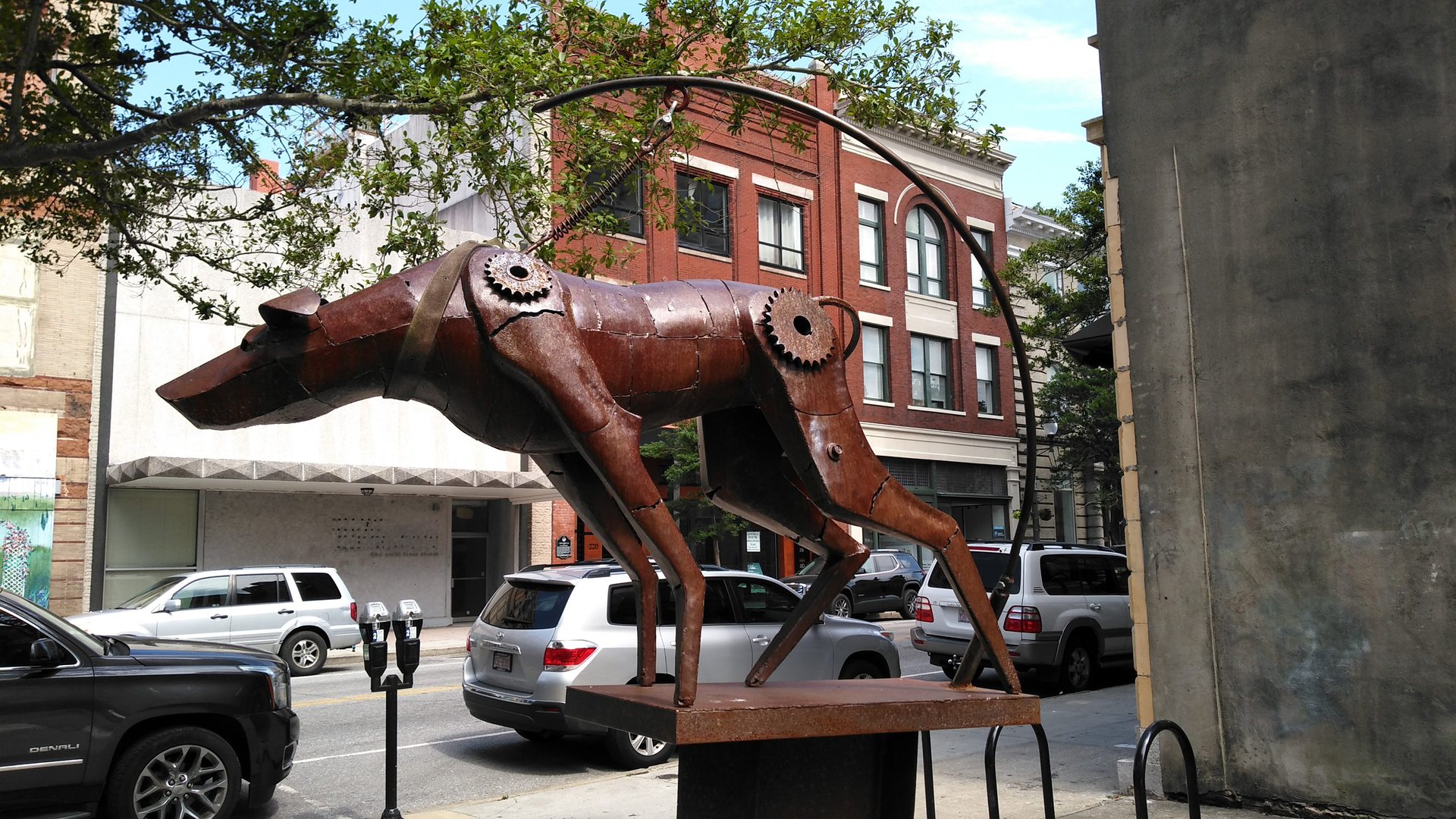 Coolpad Legacy Portait Depth On Coolpad Legacy Portrait Depth Off
Coolpad Legacy Portait Depth On Coolpad Legacy Portrait Depth Off 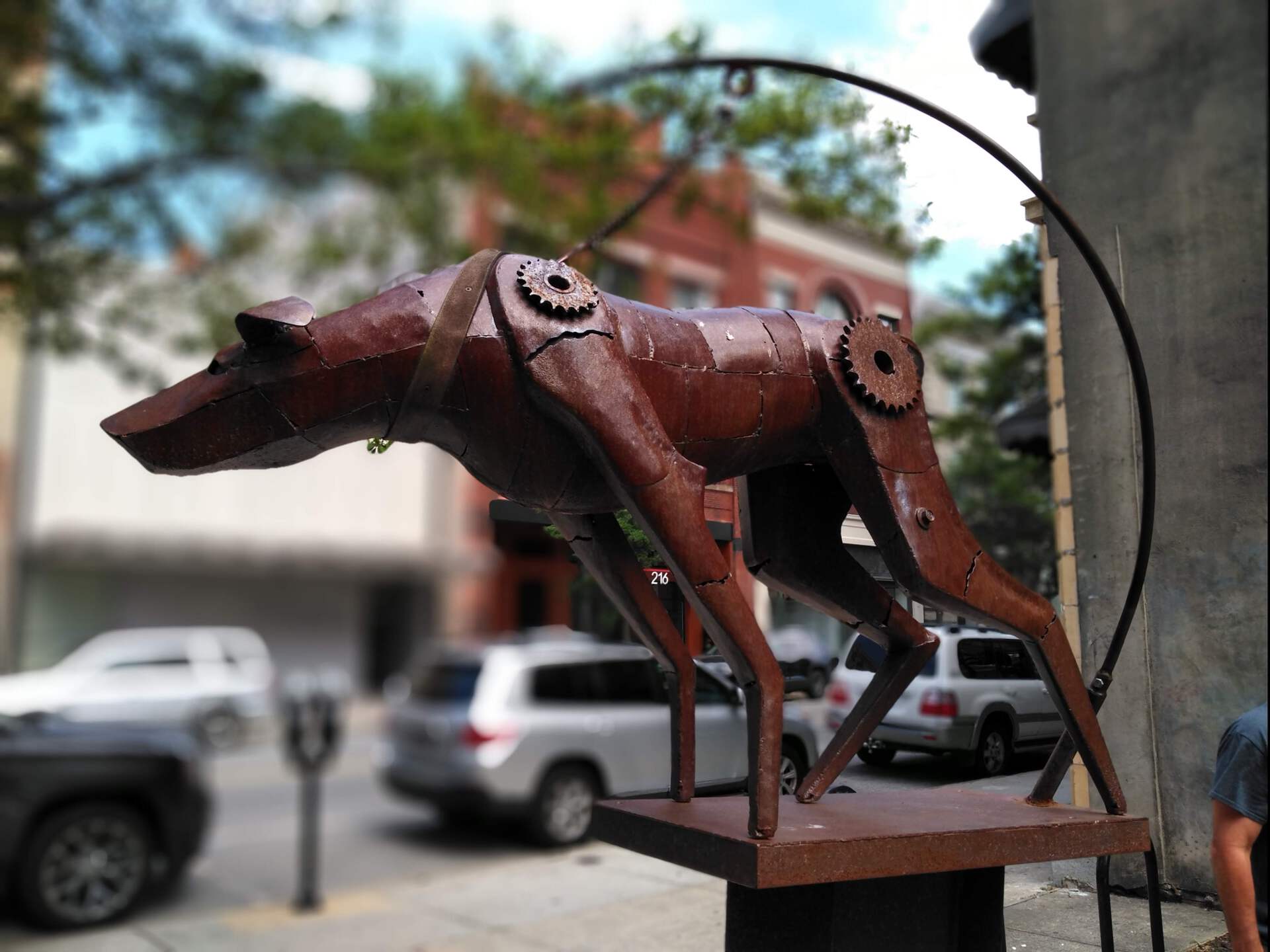
Portrait mode is where the 5MP camera comes into play. In most cases, the phone did a decent job blurring out the background with depth turned on. It won't work unless the subject is 6.5 feet away.
I did notice an issue where the camera had trouble understanding the target, at times blurring it out. Angle also played a huge part, as the camera blurred out portions of the subject instead of the background.
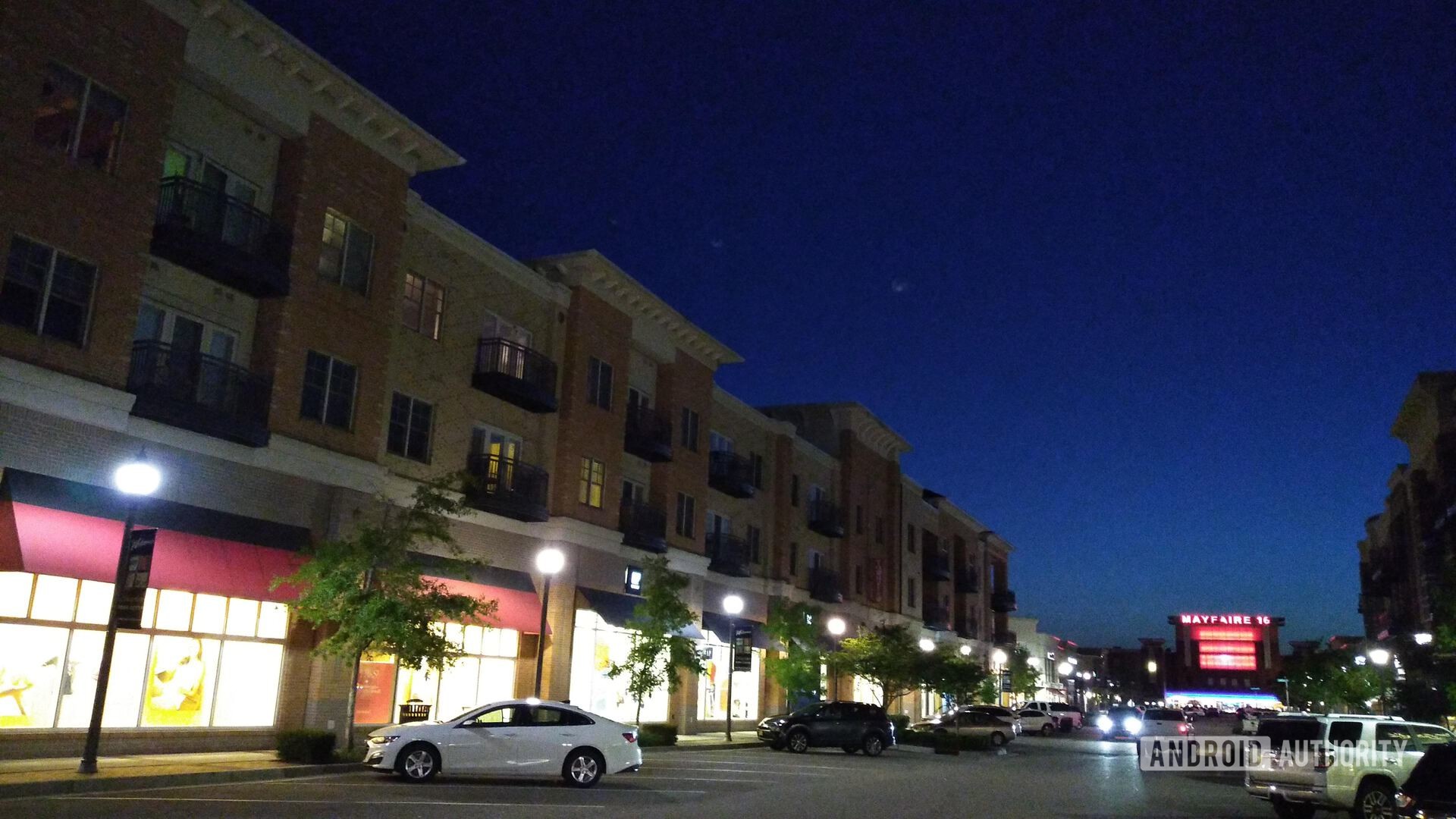 Coolpad Legacy Night Mode On Coolpad Legacy Night Mode off
Coolpad Legacy Night Mode On Coolpad Legacy Night Mode off 
I was more impressed with the camera's low light capabilities than its sunny day exposures. I sat outside a local theater and waited for the sun to set. There really weren't noticeable differences between the Photo and Night Shot modes until the sun was mostly out of sight.

I did notice, however, that the AI injected color correction where I didn't see any color, like the night sky. For instance, what appeared near-black in the real world was painted a dark blue in the photographs.
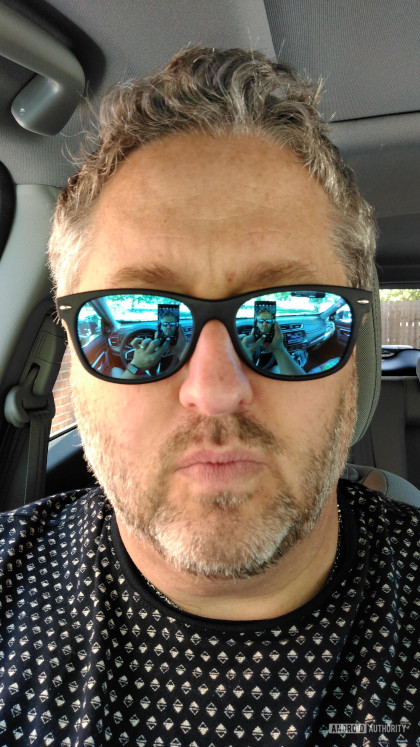 Coolpad legacy selfie with depth Coolpad legacy selfie no depth
Coolpad legacy selfie with depth Coolpad legacy selfie no depth 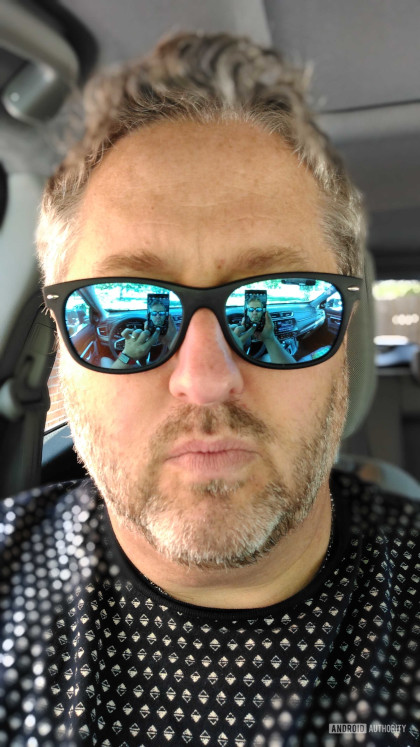
I shot two selfies: One with depth turned on and one without. While depth is neat, it's not perfect. Depth mode blurred out everything except for my face, including my hair, shoulders, and chest. Without depth turned on, the front-facing camera did a great job capturing my beautiful mug.
To see full-size images, head here to Google Drive.
Finally, video capture is fine if you're not really moving. But if you're trying to capture the kids as they run around the park, this isn't the ideal solution. Motion blur is extensive even at semi-slow movements. Even more, if you turn on the stabilization feature — represented as a shaking hand icon on the screen — motion seems rather fluid on the screen. However, the resulting video shows reduced motion blur at the cost of stuttering. In other words, movement in your videos will either be blurred or sharp and choppy.
See also: These are the best rugged phones you can buy right now
Software
- Android 9 Pie
The Coolpad Legacy runs Android 9 Pie layered with a clean and simple interface. Coolpad tucked the app drawer away at the bottom, which initially isn't apparent until you swipe up with a finger. The home, back, and recent buttons still reside at the bottom, but Android ignores these commands while you're swiping up the drawer.
By default, the UI automatically toggles between Light and Dark themes based on the background. You can manually switch between these two themes in the settings, or keep the default setting to automatic. Swapping themes merely changes the app folder, app drawer, and Quick Setting menu backgrounds.
#gallery-5 { margin: auto; } #gallery-5 .gallery-item { float: left; margin-top: 10px; text-align: center; width: 33%; } #gallery-5 img { border: 2px solid #cfcfcf; } #gallery-5 .gallery-caption { margin-left: 0; } /* see gallery_shortcode() in wp-includes/media.php */To access Google Assistant, activate the phone and simply say "Hey Google." You can also tap the microphone in the Google search widget, or long-press the Home button. Swipe in from the left to see your Google news feed or videos curated by Metro. If you need to take screenshots, disable Google Assistant first, as the screenshot utility requires the Power and Home buttons.
As previously stated, the Coolpad Legacy ships with the myMetro app for prepaid service management. You'll also find Metro's App Store, a simple showcase linking to Pandora, Yahoo! Mail, and a few other apps listed on Google Play. Device Lock sends a request to unlock the phone from T-Mobile's network. Name ID provides free and premium call-blocking services.
Other pre-installed apps include Metro's Visual Voicemail and the third-party Lookout antivirus service.
Audio
- Headphone jack
- Bottom-firing 1W speaker
- Speaker above the front-facing camera

Despite having two speaker grilles, Legacy features a single 1W speaker. It's located on the USB-C port's right side and sounds insanely loud. There's more treble than bass, producing crisp voices without the expected aluminum rattle. Of course, if you need bass pumping through your blood, Legacy's handy 3.5mm audio jack is a great seat for headphones … a feature some phones don't have.
The ear speaker produces sound during playback too, but it's barely audible. Sound also spills through the microphone grille, but nowhere near the main speaker's volume. Ultimately, to watch media in landscape mode, you'll need to position the phone so the speaker is in the top-right corner. Covering the microphone grille won't make any difference in output.
The ear speaker works just fine. Calls on my end were clear and easily heard in non-crowded scenarios.
In phone mode, the ear speaker works just fine. Calls on my end were clear and easily heard in non-crowded scenarios. They sound no different than using a premium phone.
Recipients, however, weren't quite so enthused. I heard comments that the connection wasn't good or I sounded a little hollow. This may be due to the service, microphone placement, aliens, or some other connection anomaly.
Specs
| Coolpad Legacy | |
|---|---|
| Display | 6.36-inch TFT LCD 2,160 x 1,080 at 60Hz 18:9 ratio Corning Gorilla Glass 3 |
| SoC | Qualcomm Snapdragon 450 |
| GPU | Adreno 506 |
| RAM | 3GB |
| Storage | 32GB Expandable with microSD card (up to 128GB) |
| Cameras | Rear: Standard: 16MP Focal length - 3.52mm Aperture f/2.0 Max image size - 4,608 x 3,456 Max video size - 2,048 x 1,536 Single LED flash Depth: 5MP For slow-motion capture Front: 12.7MP Focal length - 2.54mm Aperture f/2.2 Max image size - 4.160 x 3,120 Max video size - 2,048 x 1,536 |
| Audio | One speaker (1W) 3.5mm headphone jack |
| Battery | 4,000 mAh Qualcomm Quick Charge 3.0 |
| IP rating | None |
| Sensors | Accelerometer Compass Fingerprint Gyroscope Light Proximity |
| Network | Metro by T-Mobile Boost Mobile |
| Connectivity | 802.11a/b/g/n/ac (1x1 MIMO) Bluetooth 4.2 LTE - 2, 4, 5, 12, 66, 71 UMTS - 850, 1700/2100, 1900 GSM - 850, 900, 1800, 1900 GPS A-GPS GLONASS |
| SIM | Nano SIM slot MicroSD card slot (up to 128GB) |
| Software | Android 9 Pie |
| Dimensions and weight | 165.86 x 80.52 x 8.38mm 169.8g |
| Colors | Quicksilver |
Value for the money
- 3GB RAM, 32GB storage, Quicksilver — $130

There's a lot of bang for your buck. Anyone purchasing this device should feel like they're using a premium phone.
Price savings are partially tied to the low memory and storage. The lack of an IPS or OLED screen helps bring the price down to an affordable level as well. Tap-to-Pay is out of the question, too, given Legacy's lack of NFC connectivity.
There's a lot of bang for your buck.
Legacy's main competitor appears to be Motorola's Moto G6 phone. It arrived last year while the Coolpad Legacy launched in May. Both are surprisingly similar under the hood. However, the Coolpad Legacy is a more attractive unit in my opinion. It even has a bigger screen and a bigger battery. Motorola's other phone, the Moto G6 Play, has the same-sized battery but a smaller screen and resolution.
Other devices sold at this price point through Metro include the Alcatel 7, LG Aristo Plus, Moto E Play (5th Gen), Samsung J7 Refine, and several others. At Boost Mobile, the Moto e5 Plus, Moto G7, Samsung J7 Refine, and Stylo 4 have similar price tags.
Coolpad Legacy review: The verdict
This is a great phone for $130. It packs features you'd expect from a high-dollar device, like face recognition, fingerprint scanning, and AI-enhanced photography. It's speedy enough to get things done and performs well under gaming pressure.
My only real big complaint is the camera, which was hit or miss regarding exposure and the AI. Moreover, additional color options for the phone itself would be ideal given the company targets families. Hot Pink and Midnight Blue would be great options for teens and younger kids.
If you're looking for good performance and cool features, the Coolpad Legacy is a great prepaid solution at an unbeatable price.
from Android Authority https://ift.tt/2LtcLCO
via IFTTT



































No comments:
Post a Comment